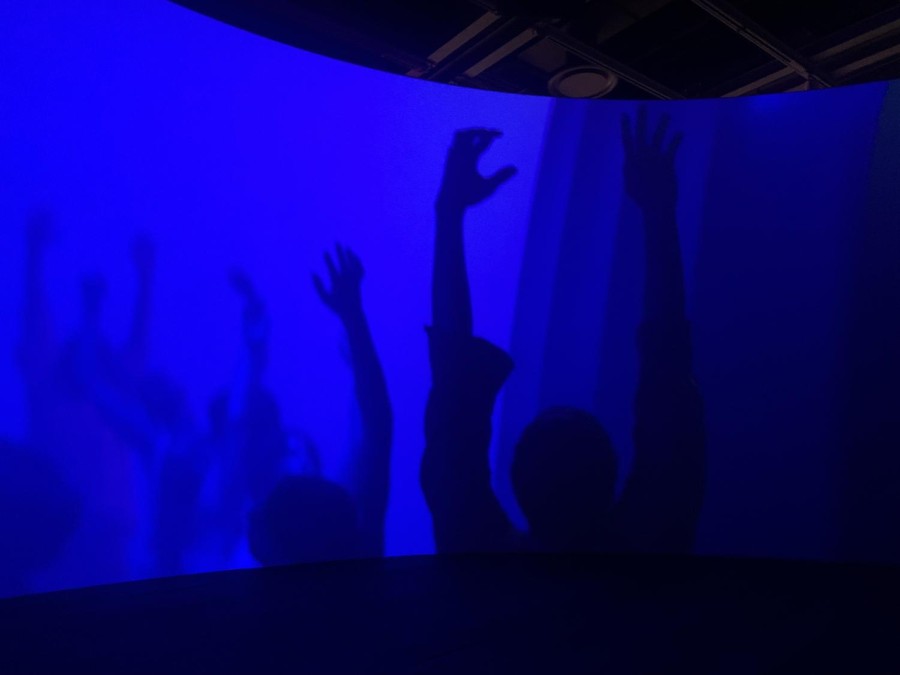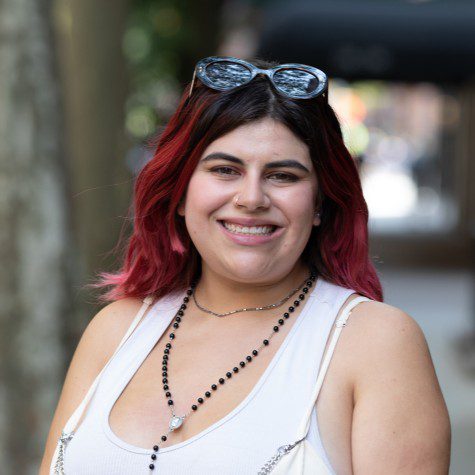Review: ‘Quiet as It’s Kept,’ the 2022 Whitney Biennial, redefines the American experience
This year’s Whitney Biennial is an interdisciplinary showcase of contemporary American art that grapples with the social issues of a complex world.
“Whitney Biennial 2022: Quiet as It’s Kept” is the newest exhibition in the Whitney Museum’s biennial series. It is open until Sept. 5. (Photo by Natalia Palacino Camargo)
April 25, 2022
The highly anticipated “Whitney Biennial 2022: Quiet as It’s Kept” has finally debuted, and contrary to its title, it’s anything but quiet.
Held every two years since 1973, this exhibition has become a museum mainstay, making the 2022 Biennial the 80th edition of this cultural landmark due to the postponement of the exhibition in 2021. While the last edition in 2019 displayed the work of 75 different artists and collectives, this year’s edition was slightly downsized, focusing on 63.
This year’s show, curated by the Whitney’s director of the collection David Breslin and director of curatorial affairs Adrienne Edwards, highlights the interdisciplinary and intergenerational nature of American contemporary art to capture the complexities, hopes and challenges of the modern American art landscape.
Having opened April 6 and running through Sept. 5, this edition of the Biennial features a more diverse selection of works, including an array of unconventional mediums such as textiles, installation, video and photography. Autonomy is an important theme that runs throughout the entire exhibition. The Whitney’s curation does not create a singular narrative, but rather gives each artist the space to present their personal American stories that combine in a shared understanding.
Must-see pieces included “Mountains Walking” by Leidy Churchman, a New York-based painter interested in exploring consciousness, whose large-scale nature landscape painting pays homage to Claude Monet’s iconic water lilies. In their piece, Churchman utilizes long, expressive strokes that mimic flowing water to present a form of mutualism between the natural and artistic worlds. Through recontextualizing the aesthetics of a classical European painting, Churchman continues to explore their own autonomous contemporary experience as a transgender artist through the lens of art history. The painting’s display also reflects the artist’s autonomy as the work is presented on a curved canvas, breaking the 2-D precedents of the museum and creating a new universe that envelops the viewer.
This year’s Biennial also breaks format by dividing up the museum’s space. On the first and sixth floors, secluded dark spaces and video work are employed to create immersive viewing experiences, while the fifth floor emphasizes the natural lighting in the open space. These contrasting spaces acknowledge the polarity of the discourse within today’s society, and allow for controversial topics to be discussed in a more appropriate context.
For example, Rebecca Belmore’s “ishkode” is a life-size sculpture of a figure covered by a sleeping bag that was then casted in clay. The sculpture stood out in a room full of digital installations, making its stark presentation even more effective. The piece is Belmore’s attempt to bring attention to the violence throughout North America and the delicate imbalance of the earth. Her ideas are intrinsically linked to her Anishinaabe culture, bringing Native American history into the foreground and calling attention to the history of stolen land.
Meanwhile, the naturally lit gallery emphasizes intersection and community. Featured are whimsical works such as Eric Wesley’s “North American Buff Tit,” which showcases the artist’s desire to embrace the absurd by reproducing a human-sized drinking bird toy. This glass object works just like the original toy, with a temperature-sensitive liquid inside it that makes it tilt depending on the amount of heat. Additionally, Lisa Alvarado’s work “Vibratory Cartography: Nepantla” is a colorful abstract map that, through utilizing the aesthetic traditions of Mexican American art, navigates the ideas of transformation.This piece conveys the complexity of the Mexico-United States border and the experience of Alvarado’s family with migrant farm labor. The painting imagines a world of interwoven pathways and future possibilities.
The Whitney’s curatorial effort to present the intersectionality of modern America is incredibly successful precisely because it doesn’t try to limit the works into a monolithic experience. Instead, the American identity is interrogated and explored through the artists’ creative capabilities and conceptual frameworks. Rather than a monologue, the show is a conversation between diasporas and a colloquium that challenges the popular discourse — a secret that can no longer remain quiet.
Contact Natalia Palacino Camargo at [email protected].

























































































































































